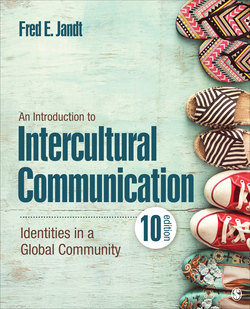Читать книгу An Introduction to Intercultural Communication - Fred E. Jandt - Страница 63
На сайте Литреса книга снята с продажи.
Intercultural Communication Competence
ОглавлениеCommunicating effectively in intercultural settings is known as intercultural communication effectiveness or intercultural communication competence. For the purposes of this textbook, let’s agree to define Intercultural communication effectiveness as the degree of the source’s success in accomplishing the goals set out for the interaction. (Review the Western model of communication in Chapter 1.) It would seem that one way to define intercultural communication competence places emphasis on the two behaviors of encoding and decoding (Monge, Bachman, Dillard, & Eisenberg, 1982). Encoding includes expressing ability, and decoding includes listening ability.
The term Intercultural communication competence has a broader meaning. For the purposes of this textbook, let’s agree to define this term as the ability to communicate effectively and appropriately with people of other cultures (Spitzberg, 2000). This concept adds to effectiveness consideration for appropriateness—that is, that relationship maintenance is valued. Intercultural communication competence requires understanding others’ perceptions and values. Intercultural communication competence consists of affective, cognitive, and behavioral attributes (Bennett, 2009). Chen and Starosta’s (1996) model of intercultural communication competence includes these three perspectives:
1 Affective or intercultural sensitivity—to acknowledge and respect cultural differences
2 Cognitive or intercultural awareness—self-awareness of one’s own personal cultural identity and understanding how cultures vary
3 Behavioral or intercultural adroitness—message skills, knowledge of appropriate self-disclosure, behavioral flexibility, interaction management, and social skills
